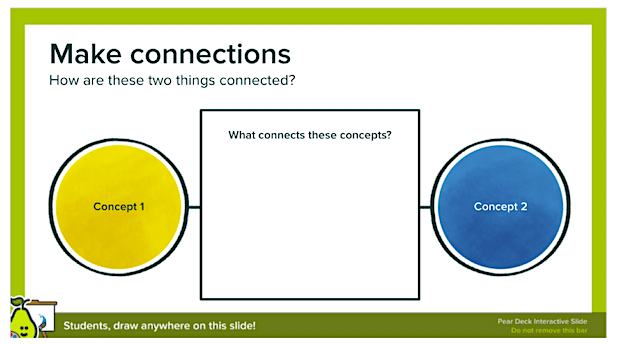Systems Thinking Helps Students Make Meaning
A MiddleWeb Blog
 My school emphasizes interconnectedness. I teach in a learning community, the students are team-taught in English and Math, we do several interdisciplinary units every year, and we have flexible classrooms that we can adjust to our needs.
My school emphasizes interconnectedness. I teach in a learning community, the students are team-taught in English and Math, we do several interdisciplinary units every year, and we have flexible classrooms that we can adjust to our needs.
This emphasis comes through in our social studies units on identity, ancient civilizations, sustainability, and religions.
“Systems thinking” ideas put the students in charge of making the connections. Teaching them the skills they needed to develop this way of thinking has allowed them to transfer their understanding of causality and interdependence in many situations and classes.
As one student put it: “Systems help show the interactions and patterns between different aspects of the topic. This can simplify a complex topic.”
One of the first steps toward systems thinking is to help students identify different patterns. We start with Institute of Play cards that display various aspects of climate change.
Students sort the cards into categories of their own choice, then decide which aspects led to others and label the effects as positive and negative. Finally, they discuss how the actions and effects are cyclical, as they build their own understanding of feedback loops.
Students sorted cards into their own categories.
Having gained that knowledge, they are able to apply this skill throughout the year. We practice feedback loops with early civilizations, the UN Sustainable Development Goals, the Flint water crisis, Palau’s marine sanctuary, and a host of other topics.
Students also identify feedback loops in their own lives, ranging from practicing their musical instruments to getting enough sleep.

Students applied their understanding of feedback loops to their study of early civilizations.
“It helps me see different causes and effects, and how one action relates to another.” – Student feedback
Once students are comfortable with feedback loops, we expand that understanding to the creation of causal maps. They draw all of the factors in an issue and extend lines to demonstrate the relationships involved.
This is such a straightforward tool that I used a causal map as the summative assessment for their ancient civilizations research project. Students asked a driving question about the collapse of a civilization, researched it, and created a causal map that clearly detailed its fall.
Students appreciated that it was a new way to show their understanding, while I found it easier to assess if students understood the factors and their interdependence.

“Using these strategies helps me understand the topic because it gives me a visual representation of the information.” – Student feedback
As the year progresses and students become more comfortable with conceptual thinking, we use hexagonal thinking. There are many ways to use hexagonal thinking in the classroom. I made a simple Google Drawing template and put a heading in each hexagon, words like definition, quote, event.
They complete the hexagons and then share with their table-mates. Everyone has different answers, which expands their understanding of sustainability (click below to enlarge this student’s response).
“It helps me find out what I know about the topic and what I still need to work on and learn about.” – Student feedback
In my sixth grade class, we use synthesis when we explain why the different parts work together to create the whole, as well as when we combine a variety of information into a strong explanation.
This is challenging work that takes a lot of practice. Students start by watching a short video, then individually write their impressions. Next they share their impressions with a partner and work together to synthesize their ideas into one paragraph. They use these sentence starters to aid their conversation:
- We learned that…
- After our discussion, we decided that…
- We used to think…, but now we think…
- Our new thinking is…
Another great synthesis tool is Pear Deck’s “Make Connections” template. You label the template with two words, images, quotes, etc. The students then have to come up with a connection between the concepts. I love that this can eventually be adapted so that students get to fill in the concepts for the class or for each other.
We all want our students to transfer their learning to other classes. To do this, we need to give them tools that can apply in many situations. With systems thinking, our students are better prepared to find interconnectedness everywhere they look.









































I am excited to use hexagonal thinking and pear’s connection in my SEL classes.
Important perspectives: Realize interconnected nature of the world. Everything has its own cause and effects.